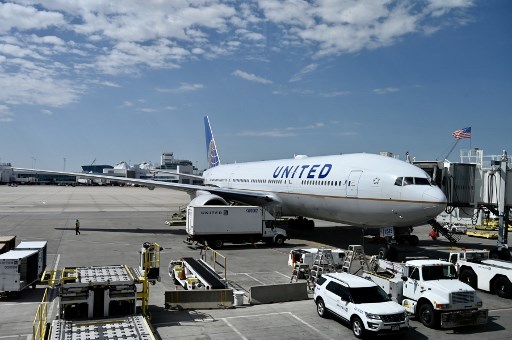
NEW YORK (AFP) — United Airlines is now planning for even deeper furloughs of pilots following the latest weakening of air travel demand due to the coronavirus, a company official said Thursday.
The big US carrier currently is planning for 3,900 pilots to be furloughed, up from 2,250 expected in early July before the latest spike in US coronavirus cases that has led to another deterioration in customer interest.
“Because COVID-19 cases continue, and demand improvement remains very slow, we may need to furlough more pilots in 2020, and in 2021, than originally planned,” Bryan Quigley, senior vice president for flight operations, said in a memo to staff.
Quigley said total revenues for the airline are down about 85 percent. The company expects to end the third quarter with a daily cash burn of $25 million per day.
“This is simply not sustainable for us,” Quigley said.
United has previously said it does not expect airline travel demand to get above 50 percent of pre-coronavirus levels until a vaccine is found and widely available. The company’s chief executive Scott Kirby said last week that he is planning for this outcome until late 2021.
Unions for airline workers are lobbying for additional funds from Congress to support jobs in the industry.
Quigley pointed to those efforts, adding that the “only other way to mitigate furloughs is through a negotiated agreement with our unions to reduce the costs until we see a return of demand to our business.”
© Agence France-Presse
